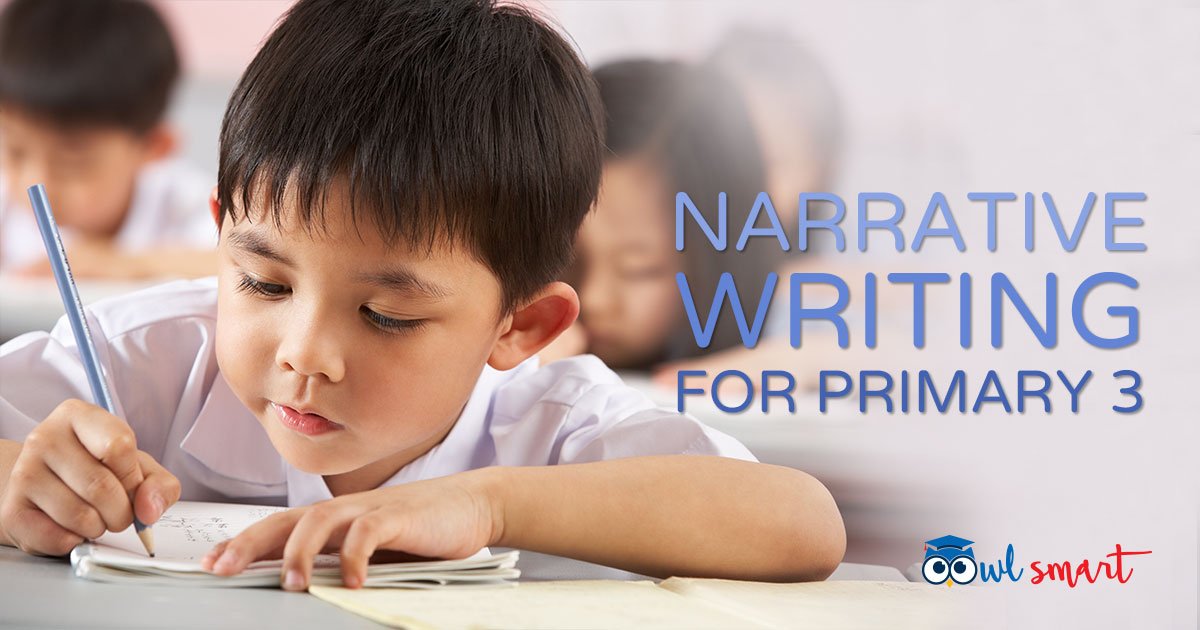
How many compositions have you done in class?
This is one of the common questions brought up by a number of parents of Primary 3 students throughout or at the end of Term 1. Well, exactly how many compositions do students do in a term? And what is exactly the nature of the composition that they are doing?
At the Primary 3 level, students will complete two to three pieces of narrative writing in a term. In narrative writing, students firstly visualize and plan the sequence of key events that make up their story. This sequence of events is also known as the plot. The plot is the story and describes how their story develops.
In a nutshell, there are the three key terms all students will have to be very familiar in narrative writing.
- Plot – How are the events arranged in the writing?
- Characters – What part do the characters play in the story and what are the problems they experienced and overcame?
- Setting – Describe the physical environment in which the plot unfolds.
The students go through a writing process where they are supposed to complete a draft, class writing, peer and/or self-editing, and group/individual writing. This is the process writing cycle that most language teachers use in guiding writing in the language classroom.
There are a few things parents may want to know in guiding their children in this process writing cycle.
How do teachers mark narrative compositions?
Content and Language are the two key areas that teachers consider as they mark compositions.
The teacher will assess if the ideas and story plot are relevant. Is the theme being addressed throughout the writing?
E.g. In a composition that touches on the theme of honesty, the student writes about kindness. Hence, there will be a misinterpretation of the theme and the writing piece will be severely penalized in terms of content.
Language refers to items like grammar, vocabulary, punctuation, paragraphing and the arrangement of the events in a logical sequence. Basically, the major grammatical aspects involve the grammatical structure of the sentences such as Subject-Verb Agreement.
-
The theme of the writing will be similar to one of the texts covered in their lessons.
E.g. A common P3 writing assignment in Term 1 involves the rewriting of a common fairy tale. This is usually assigned after the Stellar text “A Wolf’s Story” has been completed in class.
-
The spelling list is actually quite useful in their narrative writing.
The students can make use of the words provided in the termly spelling list to assist them in their writing. This is an area that most students and even teachers overlook. Hence, do make use of the spelling list.
-
There is always a problem or difficult situation faced by the main character in the writing.
How is the main character different at the end of the story?
Did he experience any personal growth in that he overcame a problem or challenge?
A common observation is that students do not describe how their characters have changed at the end of the story.
E.g. After the incident, Kim realised that her rashness has caused her classmate to be injured. She is now more careful with her actions especially when her classmates are around her.
- Does the student writes in the present tense instead of the required past tense?
- Is the student aware that the story involves a first-person or third-person perspective?
Generally, the total marks will be 20 – 10 allocated for Content and the remaining 10 allocated for Language.
Next Up... Managing Content in Narrative Writing
We will have another article that takes a closer look at managing content in narrative writing for students in Primary 3 and 4. Stay tuned!
About the Author
Teacher Chin has more than a decade of experience in teaching English from Primary Two to Primary Six in local primary schools. He is presently, in his free time, having immense enjoyment experimenting with the Nimzo-Indian Defence in chess and trying out the Apacs Lethal 9 in badminton doubles.



